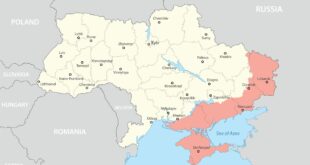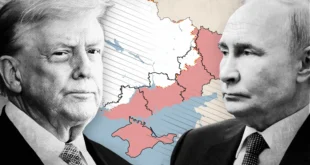Both the United States and Iran have been strong rivals to each other, given their harsh historical relations. History has recorded beneficial and proper relations between the two nations, which later deteriorated due to anti-sovereign and anti-diplomatic activities, ultimately leading to regional and global anarchy. Their relationship has been a rollercoaster of hostility and fugitive diplomacy, driven by shifting power dynamics in the region. Iran-US relations shaped the framework of the US’s self-centered foreign policy, deeply based on ideological clashes, power struggles, and geopolitical maneuvering. From Washington to Tehran, the region remains an epicenter of chaos and instability, fueled by ever-changing power dynamics.
Dating back to history, since the 1979 Islamic revolution in Iran and the subsequent seizure of the US embassy, Iran’s relationship with the US has been strained consistently. On the other hand, the Islamic Republic of Iran regularly appears on the annual report of the U.S. among the terrorism-sponsoring countries. The United States also accuses Iran of its involvement in the development of weapons of mass destruction (WMD). Although Iran has ratified several treaties and agreements, including the Nuclear Weapon Nonproliferation Treaty (NPT), the Biological and Toxin Weapons Convention, and the Comprehensive Ban Treaty (CTBT).
However, Iran justifies its pursuit of weapons of mass destruction (WMD) as a means of self-defense against its existing regional rival countries such as Israel, Pakistan, and the United States itself. Whereas the US perceives it as a direct threat to the West, sanctioning Iran and its close allies for a long time. This dilemma continues to bloom even in contemporary times. The US supported Mohammed Reza Shah Pahlavi while sidelining Iran’s key leader. The US overthrew Iranian Prime Minister Mohammed Mosaddegh, best known for nationalizing Iran’s oil industry, in a CIA-MI6-backed coup (Operation Ajax). Similarly, the US provided unwavering support to Saddam Hussein during the Iran-Iraq War (1980-1988), setting a precedent for future financial and military support against Iran.
Since that time, the United States has consistently isolated Iran from regional balance through economic sanctions and military and diplomatic relations. Given US-DPRK relations, in 2002, during President W. George Bush’s administration, the US officially labeled an alliance between Russia, the Democratic People’s Republic of North Korea (DPRK), and Iran as the “Axis of Evil.”. Trump’s first tenure introduced a policy of “maximum pressure” against Iran, undermining its oil industry and targeting its Middle Eastern supremacy, further leading to Iranian collapse. The US’s ongoing efforts to undermine Iran’s influence in the region can also be observed in the ever-chaotic Middle East and the ongoing turmoil engulfing the area, with the potential downfall of the Assad regime in Syria seeming a blow to Iran’s geopolitical standing further.
Both Assad’s fall and the changing dynamic of the Israel-Palestine issue have significantly impacted international politics in the Middle East, inflicting damage on the US’s economic and military rivals, including Russia, China, Iran, Hamas, and Hezbollah, isolating the US’s most rival country, “Iran.”.
Syria, often considered the strategic backyard of Iran, had been governed by a minority Shiite Muslim family for more than five decades until December 8, 2024. The Fall of Assad marked a historic global transition from dictatorship to rebellion, leading to an overthrow of the long-serving dictatorship of the Assad family. Historically, Iran had provided substantial military and financial support to Assad to ensure his regime’s survival in Syria, including the presence of Islamic Revolutionary Corps Guards (IRGC) officers, especially from the Al-Quds Forces. Whereas financially, Iran has extended approximately $6.6 billion in credit lines (2013) for essential supplies like oil and goods. Assad’s fall has severely undermined Iran’s position in the region, countering its Sunni proxies in Syria.
Similarly, the fall of Assad has severely damaged Russia’s growing regional influence, as Syria served as Moscow’s key ally in the Middle East. Russia had strengthened its relations with Iran to counter Western influence, but unfortunately, Assad’s downfall weakened this strategy, reducing Russia’s military dominance and diplomatic leverage in the region. However, strategically, now Russia could not be able to operate its naval base in Tartus, crucial for power projection. This diffusion in power projection weakens Moscow’s ability to challenge NATO’s regional influence. Being a key ally of Syria and Iran in the region, Russia loses a significant arms market in shaping Middle Eastern dynamics alongside Iran against West-oriented policies.
Analogously, the absolute toppling of Hamas from Palestine and Iran-backed Lebanese Hezbollah from the region has crippled Iranian influence, leading to the complete isolation of Iran. Israel has been successful in achieving its planned objectives, including the annihilation of their top leaders, such as Hamas’s Ismail Haniyeh, Yahya Sinwar, and Hezbollah’s Syed Hassan Nasrallah. Both leaders and these Shiite militant groups serve as Tehran’s primary regional proxies, enabling Iran to strengthen its influence in Palestine, Syria, Lebanon, and Libya. Without these, Iran’s “Axis of Resistance” against Israel and the West diminishes, reducing its leverage in regional conflicts.
However, the collapse of these organizations may aggravate domestic instability within Iran and may cause internal division within the organizations themselves.
The US has subdued each emerging country against the West through economic, diplomatic, and military actions to isolate Iran. Iran’s presence as a dominant player in the region has been diminished by the US through the Abraham Accords as well. To reduce Iran’s influence and power, the US has engaged Middle Eastern countries in economic agreements through Abraham Accord I (2020) and Abraham Accord II (proposed expansion). The US has engaged the two most significant countries of the region in economic cooperation, including Bahrain and the United Arab Emirates (UAE). Now, Israel is closer to the Arab world than Iran is, concealing Iran in the geopolitical arena. Egypt and Jordan have maintained limited economic relations with Israel, enabling the US’s isolation policy for Iran.
Furthermore, China, as an economic rival country to the US, sought to expand its influence to the Middle East through diplomatic ties with Syria, aimed at integrating the region in its Belt and Road Initiative (BRI) and Shanghai Cooperation Organization (SCO). The Oval Office actively countered these efforts, using economic pressure, strategic alliances, and military presence to curb Beijing’s eco-strategic ambitions. Assad’s fall in Syria was also a signal for Beijing not to interfere in Middle Eastern geopolitics, extended through President Xi Jinping’s second visit to Syria in September 2023.
However, following strategic successes, the United States is now poised to assert greater pressure and control over the region, with increased confidence and rigidity. With the geopolitical landscape now open, the Oval Office has a crystal-clear advantage in dismantling anti-American organizations and rival states. For adversarial powers, regaining their pre-October 7 influence in the region will be more challenging, as the United States now holds the reins of the power firmly in its hand.
 Geostrategic Media Political Commentary, Analysis, Security, Defense
Geostrategic Media Political Commentary, Analysis, Security, Defense





